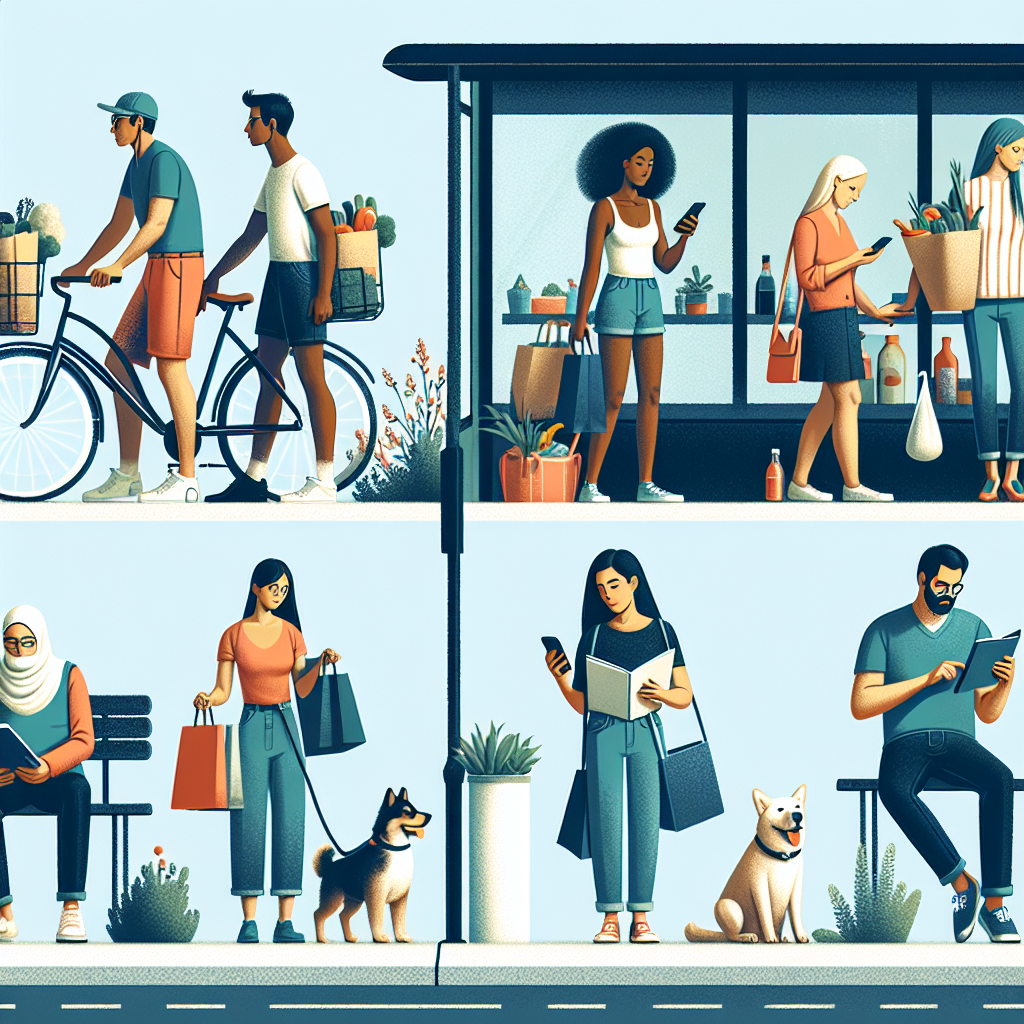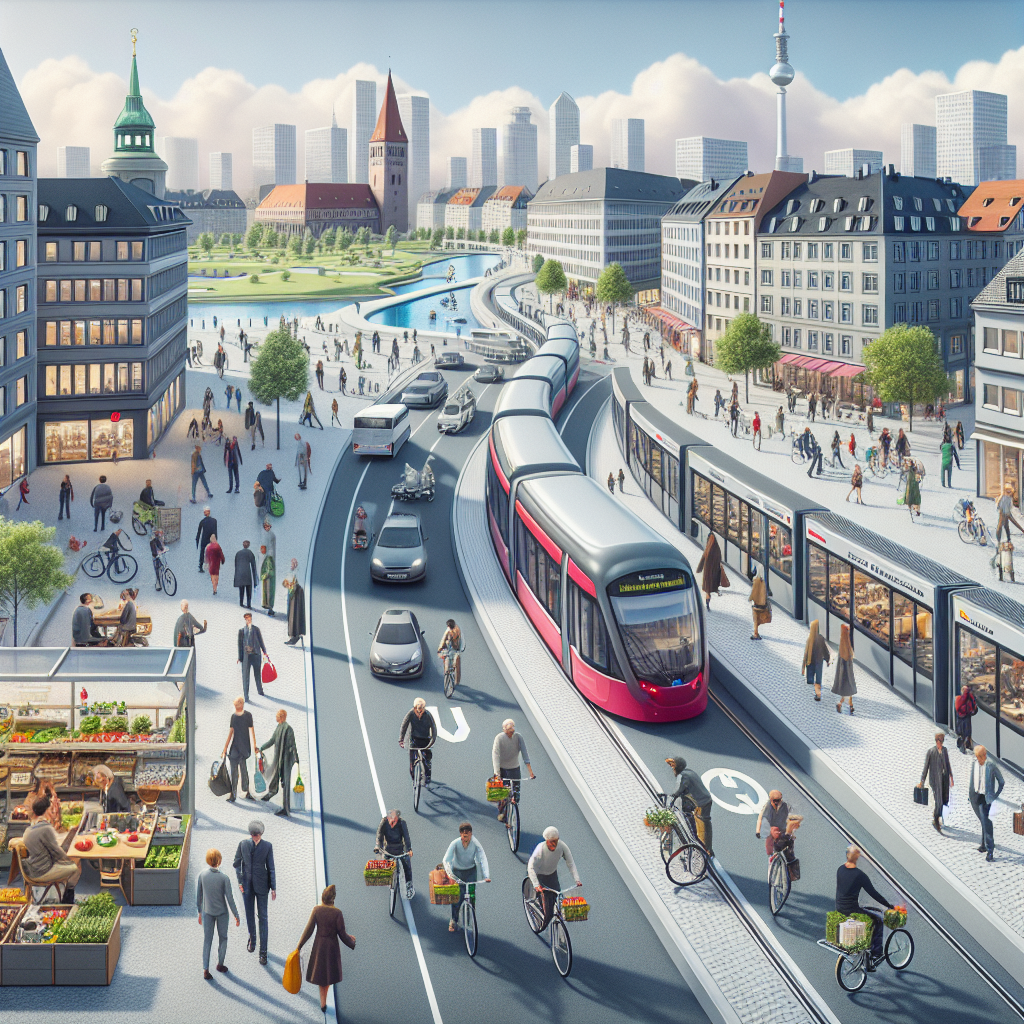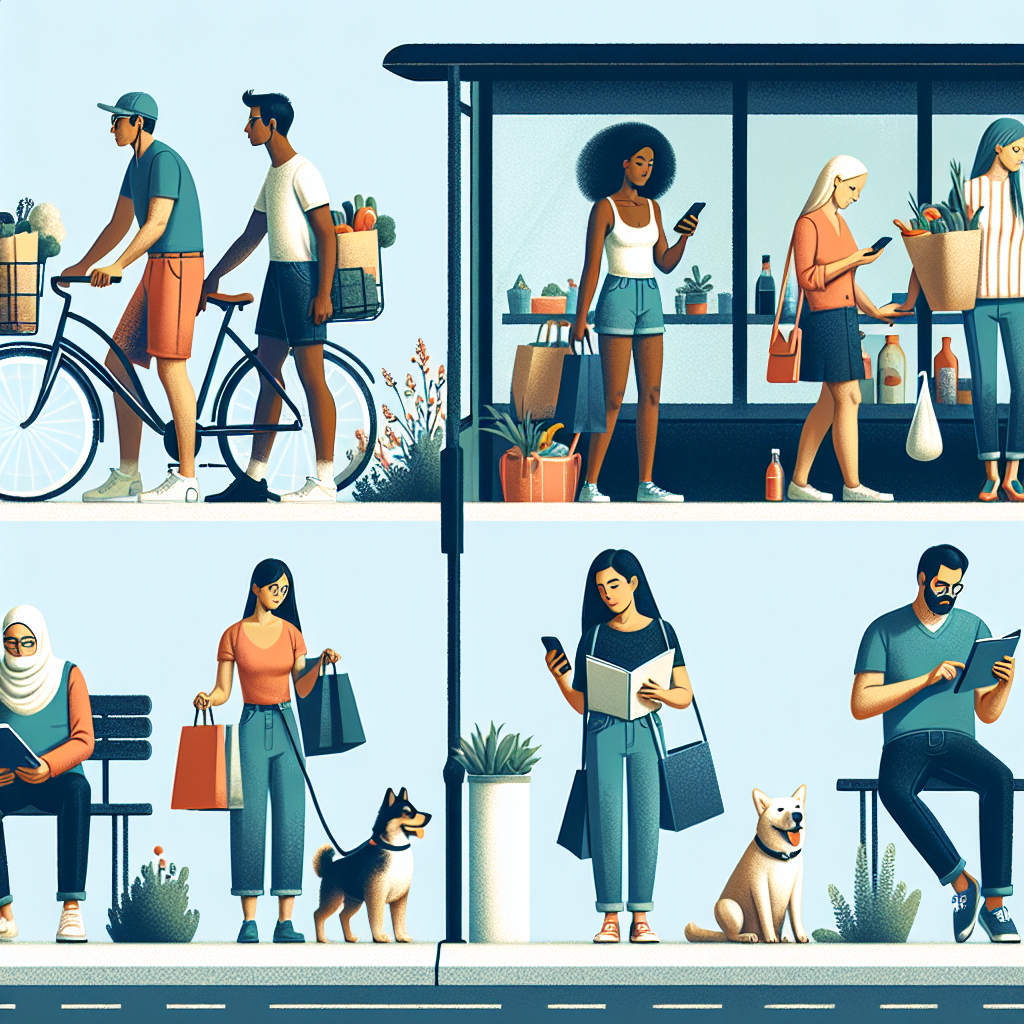Living Without a Car: A Realistic and Economical Approach explores the viability of living without a car in today’s fast-paced world. With rising fuel costs, parking woes, and increasing concern for the environment, many are considering alternative modes of transportation. This article examines the benefits of embracing a car-free lifestyle, featuring practical tips for navigating daily life without the reliance on a vehicle. Discover how you can save money, reduce your carbon footprint, and experience the freedom of exploring your surroundings on foot or by public transit.
The Benefits of Living Without a Car
Living without a car can bring numerous benefits to your life. Not only can it help you save money, but it can also improve your health and fitness levels while reducing your environmental impact. By exploring alternative modes of transportation, creating a car-free lifestyle, and overcoming challenges, you can enjoy a fulfilling and sustainable way of living.

Reduced Expenses
One of the most significant benefits of living without a car is the reduced expenses. Car ownership comes with a range of financial responsibilities, including fuel costs, insurance premiums, maintenance fees, and parking expenses. By eliminating these costs, you can save a significant amount of money each month.
Additionally, you can minimize the impact of depreciation, a significant cost associated with car ownership. Cars lose value over time, and without a car, you don’t have to worry about this financial burden. By redirecting the money you would have spent on a car towards other essential needs or long-term savings, you can achieve greater financial stability.
Improved Health and Fitness
Living a car-free lifestyle encourages physical activity, leading to improved health and fitness. Walking or cycling for transportation purposes can help you incorporate physical exercise into your daily routine effortlessly. Regular exercise can enhance cardiovascular health, strengthen muscles, and boost your overall well-being.
Additionally, ditching the car can decrease sedentary behavior, which is known to have negative effects on health. By incorporating physical activity into your daily life, you can reduce the risk of conditions such as obesity, diabetes, and heart disease. Not to mention, the fresh air and the opportunity to enjoy your surroundings can have a positive impact on your mental health.
Reduced Environmental Impact
Choosing to live without a car can have a positive effect on the environment. Cars emit greenhouse gases, contribute to air pollution, and consume non-renewable resources, leading to climate change. By reducing your reliance on cars, you can help minimize these detrimental effects and contribute to a cleaner, greener planet.
Living without a car means less fuel consumption, resulting in reduced carbon dioxide emissions. It also reduces the demand for oil, which has far-reaching environmental consequences. By choosing alternative modes of transportation, such as public transportation, cycling, or walking, you can actively participate in sustainable practices and be a part of the solution to environmental challenges.
Finding Alternative Modes of Transportation
Living without a car doesn’t mean being stranded; there are various alternative modes of transportation available for your daily needs. Exploring these options can provide convenience, flexibility, and cost savings.
Public Transportation
Public transportation is a reliable and cost-effective way to get around. Buses, trains, and trams provide extensive coverage and can take you to most destinations. By utilizing public transportation, you can reduce your commuting expenses and enjoy a stress-free journey as you let someone else handle the driving and navigation.
Cycling
Cycling is not only an excellent way to live without a car; it’s also a fun and efficient mode of transportation. Investing in a good-quality bicycle and the necessary safety equipment can open up endless possibilities to explore your neighborhood, run errands, and even commute to work. Cycling also promotes a healthier lifestyle and allows you to bypass traffic congestion, making it a practical and sustainable choice.
Walking
Walking is the most basic and natural mode of transportation. It requires no additional costs or equipment, making it easily accessible to everyone. Living in a walkable neighborhood can provide numerous benefits, including increased physical activity, decreased reliance on cars, and better overall well-being. Walking can be incorporated into your daily routine for shorter distances, allowing you to savor the sights and sounds of your surroundings.
Carsharing Services
Carsharing services offer a convenient and cost-effective alternative to car ownership. These services allow you to rent a car for a short period, usually by the hour, helping you access a vehicle when needed without the hassle and expense of owning one. Carsharing services often have vehicles strategically located in various neighborhoods, making it easy to find a vehicle close to your home or workplace.
Ridesharing Services
Ridesharing services, such as Uber or Lyft, provide an alternative to traditional taxis. By connecting drivers with passengers through a smartphone app, these services offer a convenient and flexible means of transportation. Ridesharing can be a practical option for longer distances or situations where public transportation or other alternatives may not be readily available.

Creating a Car-free Lifestyle
Transitioning to a car-free lifestyle requires careful planning and smart decision-making. By considering factors such as choosing a walkable neighborhood, prioritizing essential amenities, employing time-saving strategies, and managing transportation needs for special occasions, you can successfully adapt to and embrace a car-free lifestyle.
Choosing a Walkable Neighborhood
When searching for a place to live, consider the walkability of the neighborhood. A walkable neighborhood has amenities within a short distance, such as grocery stores, schools, parks, and entertainment options. By choosing a neighborhood that allows you to meet your daily needs within walking or cycling distance, you can significantly reduce your reliance on cars.
Prioritizing Essential Amenities
Living without a car means relying on alternative modes of transportation for essential needs. It’s important to prioritize proximity to amenities like grocery stores, pharmacies, healthcare facilities, and public transportation hubs. By ensuring these amenities are easily accessible, you can maintain a convenient and efficient lifestyle.
Employing Time-saving Strategies
Living without a car may require some adjustments to your daily routine to optimize your time and avoid unnecessary delays. Planning your trips and errands efficiently can save you time and make transportation logistics seamless. By grouping errands together and coordinating your activities, you can make the most of your time and minimize the need for additional trips.
Managing Transportation Needs for Special Occasions
While living without a car is feasible for day-to-day activities, special occasions or long-distance travel may require additional transportation options. Planning ahead and exploring alternatives, such as renting a car for special occasions or utilizing long-distance transportation services, can help you meet your needs without the burden of car ownership.
Overcoming Challenges
Living without a car does present some challenges, but with careful consideration and preparation, these obstacles can be overcome.
Adapting to Weather Conditions
Weather conditions can present challenges when relying on alternative modes of transportation. However, with proper planning and appropriate clothing or gear, you can comfortably navigate through rain, snow, or extreme temperatures. Investing in quality rain gear, insulated clothing, and suitable footwear can go a long way in ensuring your commute remains pleasant, regardless of the weather.
Managing Grocery Shopping
Grocery shopping without a car requires some creativity and planning. Utilize public transportation to carry your groceries when feasible, or consider investing in a sturdy backpack or shopping cart to transport your purchases. Exploring local farmers markets and utilizing grocery delivery services can also simplify the process and reduce the need for extensive transportation.
Traveling with Children
Living without a car while having children may require additional considerations. Utilizing strollers, baby carriers, or child seats for bicycles can provide safe and efficient transportation options. Planning your routes and choosing child-friendly neighborhoods with parks and schools within walking distance can make the experience enjoyable for both you and your children.
Dealing with Medical Emergencies
In the event of a medical emergency, quick and reliable transportation is crucial. It’s important to familiarize yourself with your local emergency services and ensure you have access to reliable transportation options, such as ridesharing or contacting emergency medical services directly. Discussing emergency preparedness with healthcare providers can provide you with guidance and additional resources in case of unforeseen circumstances.
Financial Considerations
Before fully committing to a car-free lifestyle, it’s crucial to evaluate the financial implications.
Calculating Car Ownership Costs
To determine the financial benefits of living without a car, calculate the actual costs of owning and maintaining a vehicle. Consider factors such as monthly car payments, insurance premiums, fuel costs, maintenance and repairs, parking fees, and depreciation. Understanding the true cost of car ownership will help you make an informed decision about its financial impact on your life.
Estimating Alternative Transportation Costs
Evaluate the costs associated with your chosen alternative modes of transportation. Research public transportation fares, cycling expenses (such as bike maintenance and safety equipment), and the rates of carsharing or ridesharing services. Comparing these costs to your car ownership expenses will give you a clearer understanding of the financial implications of living without a car.
Determining the Financial Viability of Living Without a Car
By comparing the costs of car ownership to alternative transportation options, you can determine whether living without a car is financially viable for you. Consider factors such as the availability of alternative modes of transportation in your area, the distance of essential amenities, and your commuting or travel needs. Assessing the overall financial impact will help you make an informed decision that aligns with your budget and lifestyle.
Practical Tips for Living Without a Car
To make the transition to a car-free lifestyle as smooth as possible, consider implementing these practical tips:
Plan Trips and Errands Efficiently
Maximize your time and energy by planning your daily trips and errands efficiently. Combine multiple tasks in a single trip and choose the most convenient mode of transportation for each activity. This way, you can minimize unnecessary back-and-forth travel and make the most of your time.
Utilize Delivery and Online Shopping
Take advantage of the convenience of delivery and online shopping services. Many grocery stores, pharmacies, and retailers offer home delivery options, allowing you to access essential items without leaving your home. By utilizing these services, you can save time and effort, making your car-free lifestyle more convenient.
Stay Informed about Local Transportation Options
Keep yourself informed about local transportation options available in your area. Stay updated on public transportation schedules, route changes, and any new services or infrastructure developments. This knowledge will help you efficiently navigate your city or town, ensuring you always have reliable transportation choices.
Build a Supportive Network for Carpooling
Carpooling with neighbors, colleagues, or friends can help alleviate the challenges of living without a car. By building a supportive network for carpooling, you can share transportation costs, reduce carbon emissions, and enjoy the company of others during your commute. Arranging regular carpooling schedules can also bring a sense of routine and stability to your daily life.
Maintain a Bicycle and Safety Equipment
If cycling is one of your primary modes of transportation, it’s essential to maintain your bicycle and safety equipment. Regularly inspect your bicycle for any maintenance needs, such as tire pressure, brake adjustments, or chain lubrication. Ensure you have proper safety gear, including a helmet, lights, and reflective clothing, to enhance your visibility and protect yourself during rides.
Adjusting the Mindset
Transitioning to a car-free lifestyle requires a shift in mindset, but it can bring about a positive and rewarding experience.
Changing Attitudes towards Car Ownership
Challenge societal norms and question the necessity of car ownership. Recognize that owning a car is not the only way to live a fulfilling and convenient life. By embracing alternative transportation options, you can reduce your environmental impact and enjoy the benefits of an active and engaged lifestyle.
Embracing the Opportunity to Explore Local Areas
Living without a car gives you the opportunity to slow down and appreciate your local area. Take the time to explore your surroundings, discovering hidden gems, parks, local businesses, and cultural sites. By immersing yourself in your community, you can develop a deeper connection and appreciation for your neighborhood.
Cultivating Patience and Flexibility
Living without a car may require patience and flexibility as you navigate through various transportation options. Delays, changes in schedules, or unexpected weather conditions are all part of the experience. Embrace these challenges with a positive attitude, knowing that by choosing a car-free lifestyle, you are contributing to a more sustainable future.
Savoring the Benefits of Car-free Living
As you adapt to your car-free lifestyle, take time to reflect and appreciate the benefits it brings. Celebrate your improved fitness levels, decreased environmental impact, and the financial stability you have gained. By savoring the rewards of car-free living, you can reinforce your commitment and inspire others to consider alternative transportation options.
Finding Motivation and Inspiration
Living without a car can be more enjoyable and fulfilling when you find motivation and inspiration from various sources.
Connecting with Car-free Communities
Reach out to car-free communities in your area or online to connect with like-minded individuals. Sharing experiences, tips, and challenges can provide support and encouragement on your car-free journey. These communities often organize events, workshops, and gatherings, allowing you to expand your network and make lasting connections.
Seeking Role Models and Success Stories
Seek out role models and success stories of individuals who have successfully embraced a car-free lifestyle. Whether through books, blogs, or podcasts, hearing about their experiences, challenges, and triumphs can provide inspiration and guidance. Learning from their insights can help you navigate your own car-free journey more effectively.
Staying Informed with Articles and Resources
Stay informed about the latest trends, news, and research related to car-free living. Read articles, blogs, and books that explore the benefits and challenges of living without a car. Engage with reputable sources and stay up to date with emerging transportation options to make informed decisions and stay motivated.
Participating in Car-free Events and Initiatives
Engage in car-free events and initiatives in your community to showcase your commitment to sustainable transportation. Join car-free days, bike-to-work campaigns, or community walks to actively participate in efforts to reduce car dependency. By engaging with these events, you can inspire others and create a positive impact on your local community.
Planning for the Future
Living without a car can be a long-term commitment, and planning for the future is essential to ensure its sustainability.
Considering Car Ownership Alternatives, such as Electric Scooters or Bicycles
As technology advances, car ownership alternatives such as electric scooters or bicycles are becoming more widespread. These options offer increased mobility and reduced environmental impact while being cost-effective. Consider the feasibility and suitability of these alternatives in your daily life, and explore new transportation options as they emerge.
Exploring the Feasibility of Car-free Living in Different Life Stages
Consider how the feasibility of living without a car may change in different life stages. For example, living car-free as a single individual may be easier than with a growing family. Evaluate how your transportation needs and priorities may shift over time and be prepared to adapt your lifestyle accordingly. With careful planning, living car-free can remain a viable and fulfilling option throughout different stages of life.
Adapting to Changes in Transportation Options
Transportation options are constantly evolving, and it’s important to stay updated with emerging technologies and services. As electric and autonomous vehicles become more prevalent, transportation landscapes may change significantly. Stay informed about these advancements and consider how they may affect your car-free lifestyle. Embrace new options that align with your values and goals, and be open to adapting your transportation choices as needed.
Conclusion
Living without a car is not only feasible but also offers a host of benefits. Reduced expenses, improved health and fitness, and a decreased environmental impact are just a few of the advantages of embracing a car-free lifestyle. By exploring alternative modes of transportation, creating a car-free lifestyle, overcoming challenges, and considering the financial implications, you can successfully embark on a car-free journey. With the right mindset, practical tips, and motivation, you can thrive in a car-free lifestyle and actively contribute to a more sustainable future.

